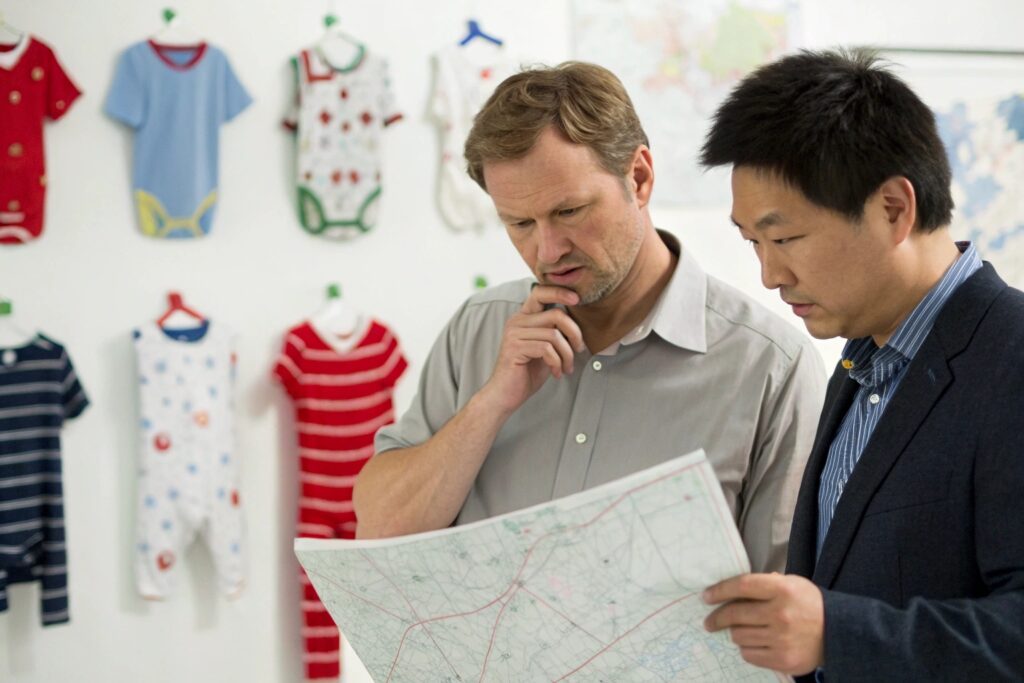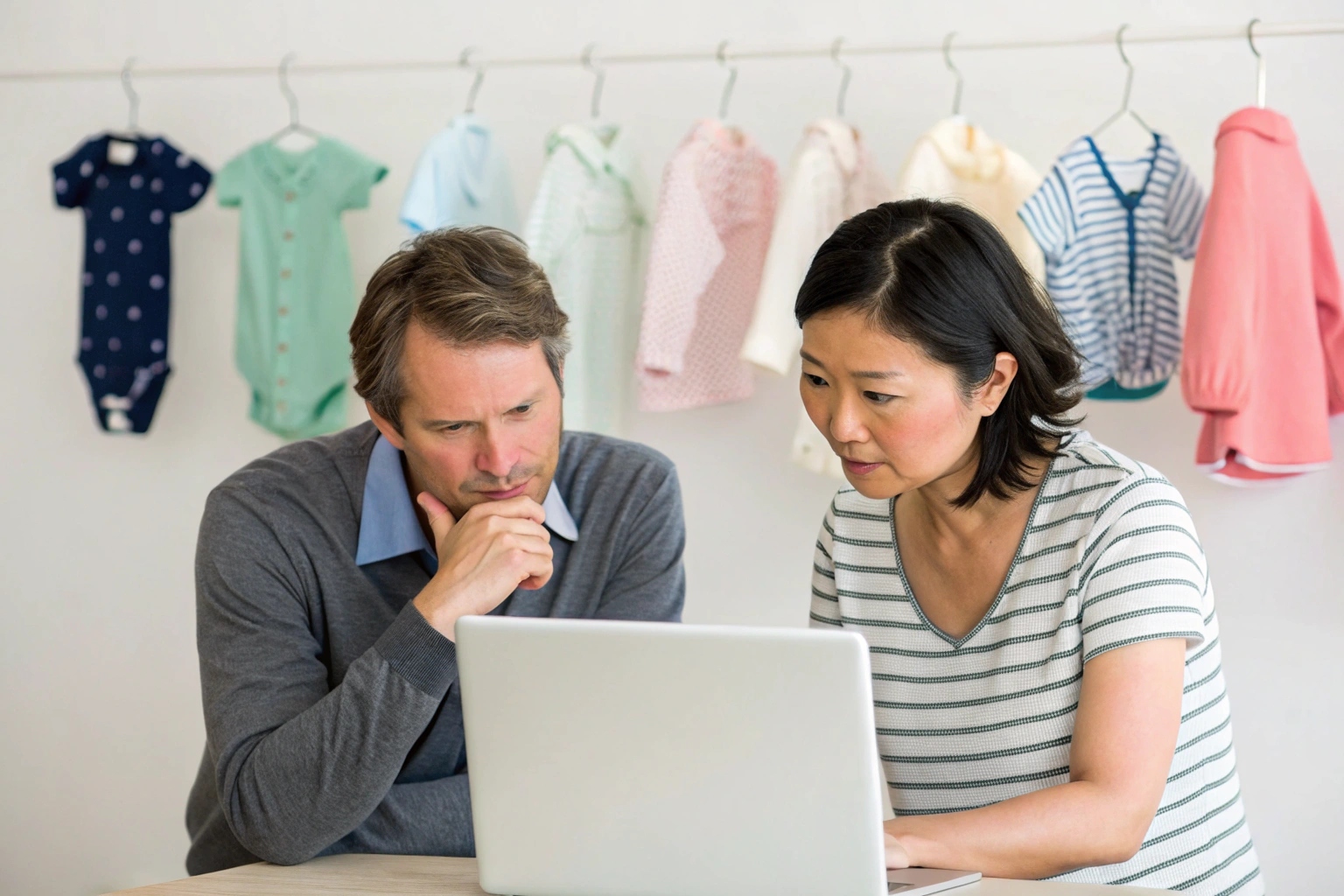In recent years, U.S. tariffs on imported apparel—especially from China—have changed how children’s clothing brands source, price, and plan production.
Recent U.S. tariffs have increased costs for children's clothing imports, especially from China, pushing importers to rethink sourcing, pricing, and logistics strategies.
In this article, we’ll break down how current tariffs impact kidswear and what smart importers are doing to stay competitive.
What Tariff Rates Apply to Kidswear?
Tariffs on children’s clothing vary depending on material, garment type, and country of origin. For U.S. importers, these rates can significantly affect product cost.
Children’s clothing imports to the U.S. can face duty rates from 0% to over 16%, depending on fabric type and HS code classification.

What are typical HS codes and duty rates for kidswear?
| Product Description | HTS Code (U.S.) | Approx. Duty Rate |
|---|---|---|
| Knit cotton babywear (under 24M) | 6111.20.6070 | 8.1% |
| Knit synthetic kidswear | 6111.30.5070 | 14.9% |
| Woven cotton boys’ shirts | 6205.20.2066 | 19.7% |
| Woven girls’ dresses | 6204.42.3046 | 11.8% |
| Toddler fleece pullovers | 6110.30.3055 | 28.2% (China origin) |
| Accessories (hats, socks, etc.) | Varies | 8–16% |
Garments made in China may also be subject to additional Section 301 tariffs (up to 25%) unless exclusions apply.
At Fumao, we work with clients to assign accurate HS codes and recommend lower-duty fabric alternatives to reduce import costs.
Are there tariff exemptions for babywear?
Sometimes. Certain items under $800 (de minimis rule) may avoid duties. Also, babywear labeled under specific age categories (0–24M) may qualify for lower rates than toddler/adult apparel.
Classification accuracy is critical. One wrong code can add 10–20% in duty costs.
Which Countries Are Most Affected by New US Tariffs?
Tariff changes haven’t hit all countries equally. While China remains a dominant player in kidswear production, its exports now face the highest barriers.
China is most affected by recent U.S. tariffs on children’s clothing, while countries like Vietnam, Bangladesh, Mexico, and Jordan remain less impacted.

How do tariffs vary by country of origin?
| Country | Tariff Status (U.S.) | Impact on Kidswear Imports |
|---|---|---|
| China | Up to 25% Section 301 + regular duties | High duties, main source targeted |
| Vietnam | MFN rate (8–14%) | Moderate duties, no extra tariffs |
| Bangladesh | MFN rate (10–16%) | Low-cost labor offsets tariffs |
| Mexico | USMCA – Duty-free | 0% with origin compliance |
| Cambodia | MFN only | Competitive for knitwear basics |
| Jordan | FTA with U.S. | 0% for eligible garments |
Most importers from China now face double-digit tariff increases, pushing many brands to diversify sourcing to Southeast Asia or Central America.
What has been the effect on sourcing?
- Shift to Vietnam and Bangladesh for basic and mid-tier babywear
- Nearshoring to Mexico for faster delivery and zero-duty entry
- Increased interest in FTA-eligible production (e.g., Jordan, Egypt)
- Brands now split production across 2–3 countries to balance cost and risk
We help clients evaluate supplier options with landed cost simulations, factoring in tariffs, freight, and production time.
How Tariffs Influence Pricing and Supply Chain Planning?
Higher tariffs don’t just raise product cost—they change how brands plan collections, select suppliers, and approach inventory management.
Tariffs influence end pricing, margin expectations, sourcing geography, and the timing of seasonal product development.

How do tariffs increase kidswear prices?
Let’s say your COGS for a cotton romper is $4.00:
| Cost Item | Before Tariff | With 25% Tariff |
|---|---|---|
| Unit Price (FOB) | $4.00 | $4.00 |
| Duty (8.1%) | $0.32 | $0.32 + $1.00 |
| Total Landed Cost | $4.65 | $5.65 |
| Markup (2.5x) | $11.63 | $14.13 |
A 25% tariff increases the retail price or reduces margin—unless offset by cost-saving strategies elsewhere.
What adjustments are brands making?
- Pre-booking fabric in low-tariff regions
- Simplifying designs (e.g., fewer trims or prints)
- Switching shipping methods (bulk sea freight > air)
- Delaying launch of high-cost styles
- Adjusting size breakdowns to meet MOQ but lower SKUs
At Fumao, we help clients reduce waste, combine styles into single production runs, and batch shipping to save on both tariffs and logistics.
What Importers Can Do to Minimize Tariff Impact?
Tariffs are here—but that doesn’t mean they have to wreck your pricing model. Smart sourcing, compliance, and shipping strategies can help maintain profitability.
Importers can minimize tariff impact by classifying goods accurately, exploring alternative sourcing countries, and optimizing production and shipping workflows.

What practical steps can reduce your tariff burden?
| Strategy | How It Helps |
|---|---|
| Correct HS code classification | Avoids overpaying on duties |
| FTA-qualified sourcing | Reduces or eliminates tariffs |
| First-sale rule application | Declares factory price, not middleman mark-up |
| Bulk ordering | Lowers per-unit freight and handling cost |
| DDP (Delivered Duty Paid) | Predictable landed cost, no hidden charges |
We offer DDP shipping, fabric substitution, and packaging optimization to help brands keep their costs—and margins—on track.
Should importers consider new manufacturing partners?
Yes. Even if you stay with China for quality or reliability, consider:
- Secondary sourcing in Vietnam or Bangladesh
- Dual-sourcing for seasonal styles or reorders
- Mexico or Jordan for nearshoring and tariff-free trade
We’ve helped multiple U.S. brands restructure their supplier network while maintaining quality and delivery timelines.
Conclusion
Recent U.S. tariffs have changed the game for children’s clothing importers. But with smart planning—right from sourcing through shipping—you can minimize costs and protect your brand’s growth. The key is adaptability, accuracy, and partnerships that help you stay one step ahead.










